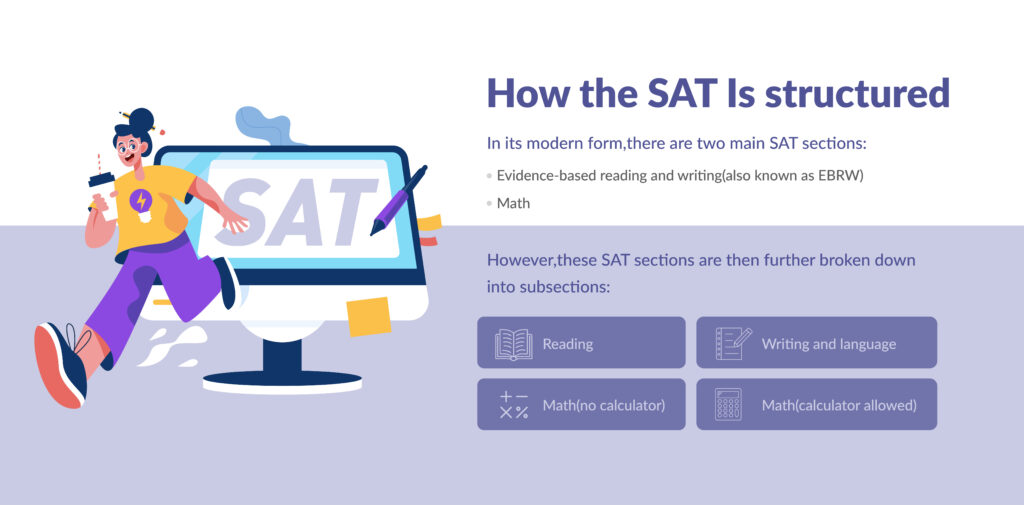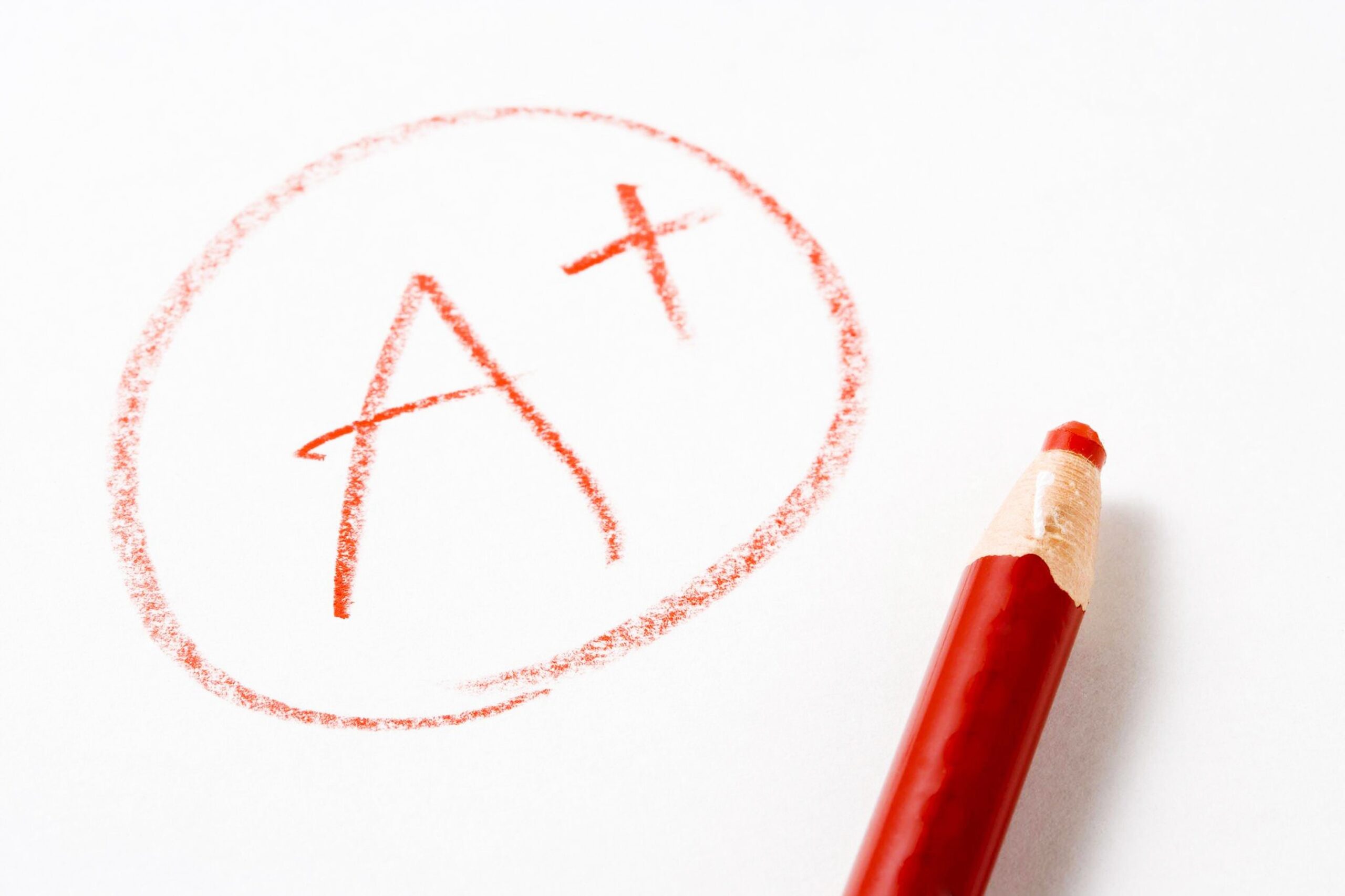If you’re a high school student (or a parent of one), you’ve probably already heard about the term ‘SAT’. In essence, it’s an acronym that stands for ‘Scholastic Assessment Test’. As for the definition of SAT, it’s basically a standardized test for assessing the student’s knowledge in the following three key areas:
- English writing
- English reading
- Mathematics
Among other things, the SAT is typically used to assess a candidate’s readiness for college as well as being one of the differentiating factors college officials rely on to pick the most suitable candidates. Although certain colleges no longer look at a candidate’s SAT score, the top ones like Harvard certainly do (after all, they need to rely on some form of objective measurement to determine the top talent).
Although these are the essentials when it comes to the SAT, there is far more to it than that, especially if you’re one of the elite students who is striving to get your foot in the door of the top universities in the US. So in today’s comprehensive guide, we’ll let you in on everything you should know about it.
SAT in the US and across the globe: How important is it really?
As already mentioned, the SAT is one of the key factors US colleges look at when deciding who gets in and who doesn’t. But don’t make the mistake of concluding that its relevance is exclusive to the United States. In fact, it’s becoming increasingly more relevant globally, including in Asian countries such as China and South Korea.
In other words, the SAT is universally seen as an indicator of academic preparedness and a valid assessment of where the candidate stands in two of the most important academic subjects: English and Math. This is not just in the eyes of US college officials, but worldwide.
For instance, as an Asian student who’s trying to get into a US college of high acclaim, convincing them with your GPA might be challenging due to the fact that not all high schools are created equal in terms of difficulty in the US, let alone in other parts of the world.
Your SAT score, on the other hand, is standardized and thus equally weighted against all other SAT test takers. Therefore, it’s going to be more easily understood and acknowledged by US college officials.
Plus, keep in mind that staying in the US is rather expensive, so you’ll want to look for ways to support yourself financially during your stay. As it so happens, a high SAT drastically increases your chances of securing a scholarship, so it makes sense to keep your SAT score as high as possible.
The good news is, you don’t have to go at it alone! At Novel Prep, we offer SAT preparatory courses that will get you to where you want to be academically. Our unique methodology ensures each student gets personalized attention from one of our SAT test tutoring experts, allowing us to pinpoint and fill the exact gaps in your knowledge by focusing on the right things.
A brief history and the definition of SAT
Now that you understand the importance of the SAT, let’s dive further into its origins and define its place in the modern world. The SAT is a standardized test that’s been in use since 1926, which is roughly 100 years at the time of writing this guide. As you can see, it has quite a history of its own by now!
However, the SAT structure wasn’t always the same – as a matter of fact, that’s not even how it was initially named. Originally known as the Scholastic Aptitude Test, the test started out with two key components:
- Verbal
- Mathematical
Similarly to what is the case today, each of these two sections was scored anywhere between 200 and 800 (for a grand total of 1600 points). Later on, it was renamed to the Scholastic Assessment Test, followed by the SAT Reasoning Test, and then finally – the SAT, as it is called today.
The entity that owns, develops, and runs the ever-popular assessment test is none other than the College Board, a privately managed nonprofit organization in the US. Throughout the years, the SAT has been revamped a number of times, with 2016 being a notable year in this regard. The goal of the redesign was to calibrate the questions to be more in line with what is taught in high schools and bring the SAT format closer to the new Common Core standards.
How the SAT Is structured
In its modern form, there are two main SAT sections:
- Evidence-based reading and writing (also known as EBRW)
- Math
However, these SAT sections are then further broken down into subsections:
- Reading
- Writing and language
- Math (no calculator)
- Math (calculator allowed)
- Essay (optional)

As for the SAT time, the total comes to 2 hours and 14 minutes (the modern digital version). The maximum score you can get in each of the two main sections is 800 (a grand total of 1600). When we’re talking about these, they’re referred to as converted scores so as to make them comparable against the SAT tests administered throughout history – the actual non-converted total score you can get may vary. Note that your score in Reading, Writing, and Language has a weight multiplier of 1x, while the Math section has a weight multiplier of 0.5x.
Another thing to note is that there is no way to score negative points on the SAT, thus encouraging students to take an educated guess if they don’t know the correct answer to a question. As for the optional essay section, keep in mind it has been discontinued since 2021. The reason is that there are other ways for students to demonstrate their command of the English language, particularly in the reading and writing section of the test.
SAT sections
Now that you have a general overview of how the SAT is structured, let’s further address the various different SAT sections that comprise the test.
Reading test
The reading test is 65 minutes long and consists of 52 multiple-choice questions. They are based on reading passages, 5 in total (on occasion, that may include tables, graphs, and charts). The students are tasked with answering 10-11 questions per passage or passage pair.
Thematically, they revolve around the following three main fields:
- Science
- History
- Social studies
For example, you may be tasked with reading and comprehending a piece of written content about:
- Psychology
- Sociology
- Economics
- Literature
- Official document
- etc.
To answer correctly, no prior knowledge is needed – the answers can be derived from the text in front of you. To do so, you will need to interpret the evidence and understand the context of the passage.
Writing and Language Test
This section has a time limit of 35 minutes and consists of 44 multiple-choice questions. Similarly to the previous section, you will be required to read passages that may contain graphs, tables, and charts. Certain sentences will be underlined and you will be asked to suggest improvements. This was designed to put the following skills to the test:
- Your ability to make the argument clearer
- Knowing how to pick a more suitable word
- Your ability to analyze the topics
- Organizing sentence structure for better impact
- Fixing words, punctuation, etc.
Students who demonstrate a powerful command over their expression of ideas typically do well on the test.
Mathematics
The math test takes 80 minutes. To complete it, you will need to answer 45 multiple-choice types of questions and 13 grid-in questions. The former has four answers you can choose from, while the latter are free-response type of questions. Note the two key SAT sections here:
- Calculator (55 minutes)
- No-calculator (25 minutes)
To perform well on this section of the test, you will need to demonstrate:
- A thorough understanding of algebra (linear equations and functions)
- Solid problem-solving and data analysis abilities (modeling and statistics)
- A grasp of radicals, non-linear expressions, exponentials, and other forms of advanced math
SAT format
Typically, the SAT test consists of multiple-choice questions (each has 4 possible answers) with the exception of certain math section questions that require a grid-in response.
SAT time and questions to answer
Many students wonder, how long does the SAT take? In total, this clocks in at 3 hours and 15 minutes. Don’t worry – there are breaks in between! To get a better understanding of how long each SAT section takes and the number of questions you’ll be expected to answer, kindly review the following table:
| Section | Number of Questions | Time | Time per Question |
| 1. Reading | 52 | 65 minutes | 75 seconds |
| 2. Writing and Language | 44 | 35 minutes | 48 seconds |
| 3. Math — No Calculator | 20 | 25 minutes | 75 seconds |
| 4. Math — Calculator | 38 | 55 minutes | 87 seconds |
| Total | 154 | 180 minutes | N/A |
The new digital SAT format
In recent years, there have been some notable changes in regard to the SAT format. Previously, the students had to submit their answers in a paper-based manner, but in 2022, the College Board decided to migrate to a purely digital format. The SAT format changes were fully implemented in 2023/2024, with paper-based answers being gradually phased out.
Much like before, the testing takes place in an official SAT test center and the students are allowed to use their own devices. If the student cannot or doesn’t want to do so, the College Board can provide one instead. The new digital SAT format is also said to be more compressed compared to the old one, meaning that each individual section is more concise and generally shorter.
SAT study guide
To maximize your chances of success, you will need to approach your studies with the right mindset and strategy. This would likely require a whole dedicated guide, but to get you going, our Novel Prep SAT tutoring experts have prepared the following key takeaways:
- Take your time to read and understand each individual lesson
- Take a SAT practice test to familiarize yourself with the test materials and flow
- Study the textbooks and focus on example questions
- Practice makes perfect
- Don’t be afraid to work with a SAT prep tutor!
The dos and don’ts of approaching the SAT test in progress
- Proper time management is key. In other words, spending too much time on a certain question could leave you in a situation where there is not enough of it left to properly devote to other questions. If you’re struggling, leave that question for last and focus on the rest. Which brings us to…
- Target the easy questions first. Simply answer the questions you’re 100% sure you know the right answer to, then focus on the ones you perceive as more difficult. This strategy allows you to make the most of the time you have available.
- Do not leave prematurely! Instead, fully utilize the time available. Even if you’ve answered every question, go over each of them one more time to ensure you’ve answered them correctly.
- Perfectionism is your enemy. Overthinking a particular question could lead you down the path of spending too much time on some questions and too little on others as you start to feel the clock ticking.
- If you truly don’t know the correct answer, taking an educated guess is better than not answering at all. Remember, the SAT is structured in such a way that you never receive negative points, so it doesn’t hurt to try. Even with a blind guess, you still have a 25% chance of getting it right.
- The process of elimination can help you deduce the correct answer. In other words, eliminate the answers that are not likely to be correct. This way, even if you’re stumbling between 2 possible answers, you’ll have a greater chance of picking the correct one.
Conclusion
And that brings us to the end of our SAT guide! By reaching the end, you now know the definition of SAT, how it’s structured and how much time you have to answer each question. In addition, you’ve familiarized yourself with the history of SAT and how it has stayed paramount to securing your academic future to this very day. As always, our Novel Prep SAT specialized tutors are happy to answer any remaining questions you might have, so feel free to drop us a message at any time!
FAQ
What are the SAT registration dates for 2024 and 2025?
The 9th of August 2024, the 20th of September 2024, the 18th of October 2024, the 22nd of November 2024, the 21st of February 2025, the 18th of April 2025, and the 22nd of May 2025.
What are the SAT dates for 2024 and 2025?
The 1st of June 2024, the 24th of August 2024, the 5th of October 2024, the 2nd of November 2024, the 7th of December 2024, the 8th of March 2025, the 3rd of May 2025, and the 7th of June 2025.
What time do SAT scores come out?
We’ve answered this question in our latest SAT FAQ article – we invite you to give it a read. Typically, this is 3-4 weeks after taking the test (on some occasions, the scores come out even earlier). Typically, they are accessible at 8 AM E.T.
How many students get a perfect SAT score?
This has happened on more occasions than once. Still, the percentage of students who manage to get a perfect SAT score is less than 1% of all test takers.
Is 1300 a good SAT score?
It’s above average, yes. However, 1300 may not be a good score depending on the college you’re aiming to enroll in. For instance, top universities like Harvard typically require a higher score than that.
How long are SAT scores valid?
SAT scores never expire, at least on paper. In practice, however, certain colleges can opt not to honor scores that are older than 5 years.
Can I take the SAT as a senior?
Yes, there’s nothing stopping you from taking the SAT as a senior. However, note that this can have notable drawbacks. For instance, this may leave you with not enough time or remaining SAT test dates to re-take the test and thus potentially improve your score if you’re not satisfied with the results.



